|
The Guanche are the people that inhabited the Canary Islands. Tall, robust, blonde to brown haired natives of these islands, these people have a mysterious origin. In Species with Amnesia, Robert Sepehr states that these Guanche people are closely related to the Cro-Magnon and are relics of the lost civilization of Atlantis. Robert Sepehr draws on the writings of Madame Blavatsky for this claim. Blavatsky, a renowned occultist and self-titled “Spirit Medium” is the founder of Theosophy and had some interesting words on the topic of the Guanche people. Blavatsky’s claim in the book is this, “IF, then, The Basque and the Cro-Magnon cave-men are of the same race as the Canarese Guanches, it follows that the former are also allied to the aborigines of America……. The Atlantean affinities of these types become patent” (Sepehr [quoting Blavatsky], page 90). What she is saying is that basically if the Cro-Magnon from Europe are related to the Guanche, that would make them the first people. This would make all three the descendants of the Altanteans. She then goes on to say: “The Guanches were lineal descendants of the Atlanteans. This fact will account for the great stature evidenced by their old skeletons, as well as by those of their European congeners the Cro-Magnon Paleolithic men” (Sepehr, [quoting Blavatsky], page91). Madame Blavatsky’s claims all follow a basic formula of A = C because of B. She claims that because the Cro-Magnon Europeans closely resemble the Guanche, then the Guanche must be Atlanteans because the Cro-Magnon were the first people, and the Atlanteans were ALSO the first people, so that must make them Atlanteans too because they look so much like the Cro-Magnon. Does any of this make sense? Well, let's break it down. Physical Appearance Evidence of what the Guanche looked like can be found in a couple of their own mummies on display in museums on the Canary Islands as well as some of those people who live in and around northern Europe and closely matching the resemblance of the Berber people. Possessing light or blonde hair and light colored eyes, the Guanche people had a very distinctive look about them, one that could be easily matched up with others around the area. These traits however, recessed a bit when the Spanish landed in the Canary Islands and mostly all of the Guanche people mixed with the Spanish, so these traits can still be seen today, just not as a whole race of people. According to the Encyclopedia Britannica, the Gaunche people had a "brown complexion, blue or gray eyes, and blondish hair, and these characteristics still persist in a large number of present inhabitants of the islands, but otherwise they are scarcely distinguishable in appearance or culture from the people of Spain.” Language Another proposed aspect of the Guanche relation to the Atlanteans resides in their language. What little is known about the Guanche language suggests it was related to the Berber language of North Africa. Berber is one of several “Afro-Asiatic" languages spoken across North Africa and Arabia. How did the Guanche get to the Canary Islands? What about Genetics? Madame Blavatsky makes the claim that the Guanche people, the Basque people, and the Cro-Magnon were all Atlanteans. This is the basis of the claim that Sepehr interprets. This claim, I believe, is right about a few points but wrong about others. In a 2004 study done by Nicole Maca-Mayer et al. in The European Journal of Human Genetics compares mtDNA (mitochondrial DNA) from aboriginal Guanches collected from archaeological sites around the Canary Islands and the mtDNA from modern residents of the islands and concludes that basically that the aboriginal mtDNA makes up around 42%-75% of the modern gene pool. A later study by Rosa Fregel et al. in BMC Evolutionary Biology analyzed Y-DNA of the Y-Chromosomal Paternal lineages. The Y-chromosomal DNA was extracted from the same aboriginal Guanche samples used in Maca-Meyers study, and was compared to samples from the 17th and 18th century remains that came after the Spanish Conquest, and samples from the present population of the Canaries. “What they found was Berber y-Chromosomal lineages prominent in the indigenous remains, confirming the North West African origin for the Guanches.” Basically, this DNA testing has found a Berber “origin” per say, in North West Africa. I can now deduce that the most likely origin of the Guanche/Berber people onto the Canary Islands was related to important human movements like the Islamic-Arabic conquest in the 7th and 8th centuries AD, which warranted rapid expansion including the Berbers, that shaped North West Africa after the migratory wave of people from North West Africa, to the Canary Islands. What can be concluded from this and what conflicts with Blavatsky’s claims is that the Guanche people got to the Canary Islands by way of the migratory wave of people from North Africa sometime after 650-750 A.D, which is the date of the Islamic-Arabic conquest stated above, which long post-dates the supposed sinking of “Atlantis” found in Plato’s writings. Is Blavatsky Right in Her Claims about Cro-Magnon Atlantean Guanches?
So in conclusion, Sepehr adopts Blavatsky’s claims about the origin of the Guanche people and that they ARE in fact relics of the lost Altantean civilization. But, to me, based off of mtDNA data and language data all relating back to their original roots, there is just no support for that. The Guanche people are related to other residents of North Africa and probably got to the island relatively late in time. Do they look somewhat like Cro-Magnons like Blavatksy stated? Maybe, but that is all she is right about. I'd also say that these Atlantis claims come from statues that the island of Tenerife has to commemorate its past rulers. Depicting them god-like and sea-dwelling, these statues are often depicted heroic and many holding tridents, begging the question of where did these come from? Did these people really exist? So, Blavatsky and Sepehr’s claims try to get us to think that this lost city of Atlantis sprung forth this race of people, fair hair and blue eyes, who eventually inhabited the Canary Islands. From the evidence that I have put forth about how they got there, who they are most related to, where they actually got their ideas from, and genetic data its easy to see that Blavatsky and Sepehr’s claims come from nothing more than Pro-Atlantis propaganda of which Blavatsky was very very accustomed to.
2 Comments
In Robert Sepehr’s book Species with Amnesia, he claims that all people who have blue eyes shared common ancestor that can be traced back several thousands of years. I will talk about not only this claim, but I will provide some background as to what causes blue eyes. I will also discuss what this research could mean, what Robert Sepehr’s interpretation of the research could mean, and how Sepehr contradicts himself by presenting this evidence of blue eye lineage. Sepehr refers to a study done on genes of people with blue eyes on page 112: “Studies carried out by scientists from the Institute of Forensic Genetics at the University of Copenhagen have concluded that all blue-eyed people share a common ancestor, someone who lived 6,000 to 10,000 years ago near Anatolia. Researchers analyzed and compared the unique genetic make-up of the chromosomes in the iris from 155 blue-eyed individuals from diverse regions such as Denmark, Turkey, and Jordan. All of the subjects that participated in the study had the exact same genetic “mutations” in specific chromosomes of the eye with very little variation on the genes, indicating that the “mutation” responsible for blue-eyes first arose and spread relatively recently.” I had to Google for a few minutes, but I eventually found this publication: a 2008 paper titled "Blue eye color in humans may be caused by a perfectly associated founder mutation in a regulatory element located within the HERC2 gene inhibiting OCA2 expression" by Hans Eiberg, Jesper Troelsen, Mette Nielsen,· Annemette Mikkelsen, Jonas Mengel-From, Klaus W. Kjaer, and Lars Hansen in Human Genetics (123(2):177-87). The experiment was indeed completed at the University of Copenhagen, and the professor that Sepehr mentions, Professor Hans Eiberg, was in fact a conductor of the experiment. This experiment that Sepehr referred to does seem to be the real deal. The only thing that I’m not too certain about is that Sepehr mentions Eiberg explaining:
“These people were among the proto-Indo-European Aryans who subsequently spread agriculture into western Europe and later rode horses into Iran and India.” This was apparently to support Sepher's claim that blue eyes originated north of the Black Sea. However, I could not find where Eiberg mentions this in the article. If the explanation was mentioned somewhere other than the publication of the experiment, Google could not find it for me. I would have liked to have seen the original source of statement. Until then, I am not certain Eidberg had even stated this. What causes the color of your eyes to be blue? Well, it depends on the amount of melanin and what location it is in your iris. A lack of melanin and a rear position of it in the iris makes for the blue pigment. So then, what determines the melanin factor? It is determined by your genes. This article is a good summary. The trait for blue eyes is in fact recessive, as opposed to brown eyes, which is dominate. It only takes one dominate allele for brown eyes, while it would take two recessive alleles for blue eyes. While Sepehr’s claim did agree with the publication of the study, what was Sepehr trying to tell us by that? Sepehr asserts this point (pg 113): “Scientists at Zurich-based DNA genealogy center, iGENEA, have published that King Tut belonged to a genetic profile group known as haplogroup R1b1a2. More than 50 per cent of all men in Western Europe belong to this genetic group as do up to 70 per cent of British men.” If that assertion is true and if R1b1a2 is related to blond hair and blue eyes, then Tut could be related to blonde haired, blue eyed people. I could not find additional information on the iGENEA conclusion of Tut being part of the R1b1a2 group. Sepehr's Out-of-Atlantis idea actually contradicts the information he presents on the origin of blue eyes: “…Cro-magnon’s DNA has remained unchanged in certain Europeans populations for over 28,000 years. Modern Nothern Europeans are most similar to Cro magnon: tall, high frequency of RH negative blood type, fair haired and blue-eyed.” (pg. 24) This is contradictory to the research that Sepehr himself referred to, the research that revealed that the mutation for blue-eyes probably arose 6,000 to 10,000 years ago. If Cro-magnon’s DNA has been the same for 28,000 years, Cro-Magnon could not possibly have had an allele for blue eyes that only appeared 10,000 years ago. What do we make of all this? If blue eyes supposedly did originate near the Black Sea, does that mean that anyone with blue eyes can be traced back to that time, that blue eyes could not have arisen on a separate occasion? What about the contradiction between blue-eyes origination and Cro-magnon? These are questions that Sepehr should’ve looked into for a better explanation. In Robert Sepehr’s book Species with Amensia, he briefly describes the Aryan expansion throughout central Asia as including the sea-faring merchants known as the Phoenicians. He describes them as a technologically advanced society who “have been marginalized by official history, and this has obscured their true identity” (page 124). Their "true identity" isn’t really described by Sepehr, so I am assuming he is saying that their true identity is an even more advanced society than historians have lead on. By looking deeper into their archaeological records, social structure, and languages one can see how little variation there is between the city-states in Canaan including how technologically advanced they were. That being said, the Phoenicians brought many achievements to the Mediterranean, including the invention of the Phoenician alphabet. As a result, Greek, Latin, and Hebrew were created through modifications of the alphabet. Even though Latin is known to have influenced the rest of the Romantic Languages spanning across Aryan societies, there was no European impact on the Phoenician language. Phoenicians were not Aryan in the way Sepehr describes. As a whole, one would characterize the Phoenicians as having Mediterranean characteristics (i.e., not white with blonde hair and blue eyes). This proves the disconnect from the blonde haired, blue eyed Aryans that Sepehr describes transitioning into Phoenician culture because the Phoenicians were the influence for their language. Crossing the Atlantic? Sepehr’s claims about the Phoenicians include the idea that they crossed the Atlantic and were the influence of Aztec culture as well. One significant objection to this argument, noted by Thomas Crawford Johnson in 1913 (page 6) is that “the Phoenician ships were not of sufficient size either to contain an adequate quantity of provisions and water for a voyage of any great length or even to make those voyages if in the open sea." Although their ships were built with new technology, like the iron nail, in order to voyage out in unmarked open waters, they would need bigger boats that utilized the use of sails rather than dozens of men on each side of the boat paddling. Although they did incorporate one main sail successfully to cross up into the English Channel, the craft could have possibly failed to make it across the Atlantic. The most advanced form of the Phoenician boat craft shows that men would have to paddle the entire way across the Atlantic, in a time where there was no frontier to get to the New World, makes it almost impossible that the Phoenicians would even venture out into the Atlantic away from Europe and the Mediterranean. The lack of direct evidence of Phoenicians in the Americas (and the improbability that their ships were capable of making the voyage) has prompted a search for other "evidence." For example, there was a gold coin that was found in Carthage (a city in the Northern part of Africa) that geologist Mark McMenamin claims contains a world map including America. The coin dates to 350 BC. Upon looking at the coin, one can see that the “map,” could be easily interpreted as almost anything due to the nature of the blobby formations (the figure showing the colored version of the map is taken from here). And why would the Phoenician horse be stepping on the rest of the world? If the Phoenicians really did spread their knowledge across the Atlantic to the New World, I feel like they would have a little more respect for all of the land they influenced.
Phoenicians Bringing America Agriculture? The Phoenicians were known for agricultural practices that included the production of olives, grapes, garlic, wheat, and other fruits and vegetables. They spread their knowledge while also integrating new agricultural practices from Asia, Europe, and Africa. From this standpoint, the earliest forms of agriculture began about 11,300 years ago, when natives from Jordan started to replant fig trees. Sepehr states that the Phoenicians brought the use of agriculture to the Americas. The domestication of maize began in the Americas about 10,000 years ago. How did the Phoenicians sailing around in 1500 BC introduce agriculture to the Americas in 8,000 BC? The “map” coin found in Carthage dates to 350 BC, only 2,365 years ago. It doesn't add up. If the Phoenicians truly went to the Americas to inform the natives of agriculture, shouldn’t we find evidence of this that dates back before 10,000 years ago? Sepher's claims about the Phoenicians have no legitimate evidence to back them up. The Phoenicians were not Aryans, did not travel to the Americas, and did not introduce agriculture to the New World. This blog post is a part of a group project that was focused on looking critically at the arguments Robert Sepehr presents in his book Species with Amnesia. In the book, Sepehr lays out the framework for his theory of the alternate origin of modern humans. Self-described as “a harsh critic of the out-of-Africa theory,” Sepehr instead argues for the existence of Atlantis. In his world view, humanity originated somewhere in the west, wherever Atlantis existed. The advanced Aryan (i.e., white, blonde- or red-haired, and blue eyed) conquerors left their Atlantean home in response to some form of cataclysm. This unknown apocalyptic event had two effects:
The memory loss did not stop the Aryan people described by the author from spreading across the entire world and “rediscovering” their old technologies. To maintain the illusion that the people from Atlantis were spread around the world, Sepehr spends a lot of ink trying to put Aryan conquerors around the world. One of those places is China. As the opening of his discussion on the presence of blond, white mummies in China, Sepehr writes (page 111): “The presence of Caucasoid haplogroups, both in ancient and recent DNA testing in south Siberia, Mongolia, China and south Asia is attested by recent genetic studies and Mummies from the Altai and Xinjiang regions only seem to corroborate this fact... This ancient group of conquerors were blonde haired, blue eyed, and averaged well over six feet tall, as the ancient and perfectly preserved mummified remains clearly indicate.” In the quoted paragraph, Sepehr cites a single source, a paper by published on the successful sequencing of ancient DNA. "First successful assay of Y-SNP typing by SNaPshot minisequencing on ancient DNA" is a mouthful and jarringly dissonant from the level on which Sepehr is writing. The basis for the paper is the application of a system, SNaPshot, to examine ancient DNA. Nowhere in the abstract of this paper do they specifically mention Sepehr’s group of conquerors as brilliant new discovery. That is because they weren’t: anthropologists and scientists have been aware of the presence of groups with Caucasoid feature in this region. The first mentioned discovery of mummies in the Xinjiang region, or Tarim Basin, was at the beginning of the 20th century. Unlike Egyptian mummies, the bodies found in the Tarim Basin were desiccated corpses, meaning that their preservation wasn’t the result of an artificial process. Sepehr later quotes Dr. Victor Mair as having said “The Tarim Basin Caucasoid corpses are almost certainly representatives of the Indo-European family (116).” However, in a PDF released by the University of Pennsylvania’s Museum, Mair mentions that despite their Caucasoid appearance, the mummies possessed multiple characteristics linking them to diverse groups outside the region. If these mummies were to be the superior Atlantean people that Sepehr wanted them to be, then this would mean that the Atlanteans took their time integrating themselves genetically in the area surrounding the Basin rather than coming into the area as a group of superior conquerors who ruled the land.
Following the previously mentioned paragraph, Sepehr writes (pp. 111-112: “Now geneticists have examined the DNA of these Proto-Indo-Europeans extracted from their ancient tombs. The results are revealed in three seminal papers. (170,171,172) It turns out that genetically the Proto-Indo-Europeans buried in the steppe kurgan graves 5,000 years ago were identical with modern Western and Northern Europeans belonging to the Nordic sub-race.” Of the three "papers" Sepehr mentions, one of them isn’t even a paper. The citation in his bibliography is so vague that when I tried to follow it, the search results are PowerPoints from a class on sequencing genomes with computers. If you’re interested, here’s the PowerPoint from what is presumably the first class for Spring semester in 2014. The other two papers do in fact discuss the presence of white people in the Tarim Basin. The abstracts for both papers can be found here and here. The papers account for the eastward migration of Europeans around 2000 BCE to AD 500 AD (many thousands of years after the supposed Atlantean diaspora). Later, Sepehr makes the statement: “Many archaeologists now think that [the Tarim mummies] were the citizens of an ancient civilization of Aryans that existed in the east (116).” Who are these archaeologists? Sepehr doesn’t cite anyone to back this claim. So, why is Robert Sepehr so interested in convincing the reader that there were white people in ancient China and Siberia? Mind you, I’m not saying that Sepehr’s evidence is wrong or that there were not actually any mummies with European features in Siberia. But why is he using this evidence? Why is he even bringing up the existence of the Tarim mummies in a book about Atlantis? For his hyperdiffusionist Atlantean ideas to work, Sepehr needs to situate groups of white people around the globe at critical points so that those groups can somehow be the ones that introduced technology and sophistication to the rest of the world. By making connections between groups, events, and objects around the world, Sepehr attempts to construct his argument that Atlantis was real and that white people are the supreme “race.” After all, if they came from Atlantis, lost everything, and were still able to rise up as a “dominant” group, then surely there must be something superior in their genetics? While Sepehr does provide evidence that supports his claim of an "Aryan race" in China, he does not provide the evidence necessary to support his claim that they were a technologically advanced race of conquerors. 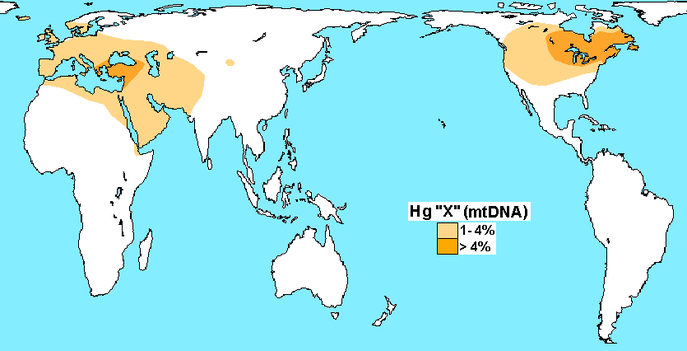 According to Robert Sepehr's book Species with Amnesia, Haplogroup X is the key to finding the original inhabitants of the lost civilization of Atlantis. A haplogroup is “a genetic population group of people who share a common ancestor on the patrilineal or matrilineal line.” Sepehr claims that 97% of living Native Americans have mitochondrial DNA from Haplogroups A, B, C, and D, while the remaining 3% belong to Haplogroup X. Sepehr states (page 71) that the founders of Native America “included those of Caucasoid ancestry and that the presence of Haplogroup X in North America opens up the possibility of an early migration westward from Europe,” and he believes that this population could have come from the lost civilization of Atlantis that sank into the ocean. He asserts (page 72) that Haplogroup X may have entered the New World in 28,000 B.C. and again in 10,000 B.C., coming in from the Atlantic, noting that this second date corresponds with the sinking of Atlantis according to Plato’s writings. As compelling as the genetic argument might seem, it is not substantial. The discovery of Haplogroup X is interesting to me, but it is highly unlikely that this points straight to the lost peoples of Atlantis. Jennifer Raff and Deborah Bolnick re-evaluate the claim that Haplogroup X could indicate ancient Trans-Atlantic migration to the Americas in a paper published in PaleoAmerica. The basis of their argument is that the migration during the Ice Age was out of Asia, but the gene pool of modern Native Americans is so diverse from contact with other groups, including Europeans. Raff and Bolnick note that the Haplogroup X’s presence in pre-European contact skeletal remains indicates that it was present before European contact with the natives in the New World. So what can explain it then? The fact of the matter is that it is relatively unknown what caused this variation. It is this mystery that leaves so much open for the interpretations of conspiracy theorists like Sepehr. Kennewick Man is mentioned in Raff and Bolnick’s paper. Kennewick man is a prehistoric Paleoamerican man whose remains were discovered on the bank of a river in the state of Washington. He is one of the most complete early skeletons ever found in the New World, dating from 8.9-9 thousand years ago. The first anthropologist to examine this man’s skull noted that he had features of modern-day "Caucasoid" peoples. He even went as far as to reconstruct the skull. The word “Caucasoid,” meaning of or relating to the Caucasian racial classification, misled many people into believing that Kennewick Man was of European descent rather than Native American. This put some backing into the idea that white people had come to the Americas before the natives. Many white supremacists and White Nationalist groups claim that the man was of European origin, similar to Sepehr’s claims. Genetic study confirmed that Kennewick man was closely related to modern Native Americans. Sepher's ideas about a European migration to the Americas during the Ice Age also resonate with the Solutrean Hypothesis. The Solutrean Hypothesis states that people from Europe may have been some of the earliest settlers of the Americas. Solutrean culture was based in what is now France, Spain, and Portugal. The idea that those people came to the the Americas is based on similarities between European Solutrean and Clovis lithic technologies. The idea of people coming in from the Atlantic contradicts the theory that the earliest peoples in America were of Asian descent, coming in from either the Bering land bridge or by maritime travel along the Pacific coast. The idea seems far fetched simply due to dating of artifacts found and other inconsistencies. It is believed that these early peoples came by boat and brought their methods for making stone tools with them, which led to Clovis technology, despite the large gap in time. There is also little evidence for any Solutrean seafaring. The argument of Haplogroup X was addressed by researchers in Brazil whose results showed strong evidence that “haplogroup X, together with the other four main mtDNA haplogroups, was part of the gene pool of a single Native American founding population.” The idea of a white/European colonization of the New World is not strongly supported by evidence. In this case, the lack of evidence is driving both forces of the argument. It is easy to write something off because the proof simply isn’t there, but it is also easier to speculate that way. The appeal of the idea seems to be rooted in prejudice. People of Caucasian descent have commonly been known to take things and claim them as their own, such as the discovery of an already populated North America by the Europeans in 1492. Sepehr’s book embraces the narrative that "whites were here first." His discussion reads less like a claim about Atlantis (as he gives little to no evidence for it), and more like a claim of white superiority. In his book, Species with Amnesia, Robert Sepehr makes the claim that the Cro-Magnon man was “tall, fair haired, and blue eyed” and therefore most similar to modern northern Europeans. He mentions the rhesus factor in blood, the DNA of Cro-Magnon, and mummies with red and blond hair. He makes four clear statements in regards to Cro-Magnon (Sepehr 24):
Before I go into Sepehr’s claims, let’s review the history of "Cro-Magnon." 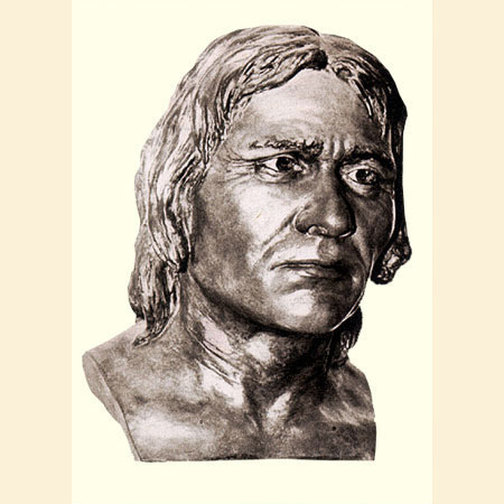 A 1915 reconstruction of Cro-Magnon by J. H. McGregor (source: http://www.kunstkamera.ru/en/temporary_exhibitions/virtual/gerasimov/03/the_predecessors/06/) A 1915 reconstruction of Cro-Magnon by J. H. McGregor (source: http://www.kunstkamera.ru/en/temporary_exhibitions/virtual/gerasimov/03/the_predecessors/06/) Cro-Magnon was first discovered in 1868 in France by Louis Lartet. It was one of the first fossils recognized as being part of our species, Homo sapiens. This quote from the Smithsonian explains Cro-Magnon’s relationship to us: “While the Cro-Magnon remains are representative of the earliest anatomically modern human beings to appear in Western Europe, this population was not the earliest anatomically modern humans to evolve - our species evolved about 200,000 years ago in Africa. However, the skull of Cro-Magnon 1 does show traits that are unique to modern humans, including the tall, rounded skull with a near vertical forehead. A large brow ridge no longer tops the eye sockets and there is no prominent prognathism of the face and jaw.” (source) The Smithsonian's website goes on to say that Cro-Magnon had an elaborate culture, as shown from various tools they used and their appreciation for art. They demonstrated their intelligence by developing a wide range of sophisticated tools, from blades to chisels. However, they also showed tremendous artistic skill by decorating their weapons and tools, creating stylized Venus dolls, and creating cave paintings. It is suggested that they also had a sense of community and group support and care, because many individuals discovered had survived traumatic injuries, such as fungal infections, neck injuries, and skull fractures. Now let's return to Sepehr’s claim that Cro-Magnon is Nordic. That sounds like it might make some sense if the remains of Cro-Magnon were found in Nordic countries. Here’s a list of all the locations of Cro-Magnon remains from Wikipedia: 1.Grotta del Cavallo (Italy) 2.Kents Cavern (England) 3.Peștera cu Oase (Romania) 4.Gower, South Wales 5.Peștera Muierilor (Romania) 6.Les Eyzies, Dordogne, France 7.Předmostí (Czech Republic) 8.Mladeč (Moravia, Czech Republic) Not one of those, of course, is a Nordic country. Nordic countries include Denmark, Finland, Iceland, Norway, and Sweden. So where does Sepehr get this idea that Cro-Magnon are Nordic? For his claim that Dalarna, a county in Sweden, is characterized “by almost pure Cro-Magnons,” he cites the 1994-2002 editions of Encyclopedia Britannica. “Particularly noteworthy are the Dal people from Dalecarlia (now Dalarna, Sweden.) and the Guanches of the Canary Islands, the latter of which is said to represent a relatively pure Cro-Magnon stock.” Now, I know what you’re thinking: Encyclopedia Britannica is a reliable source, so this has to be true! Well, here’s the fun part: it appears that Sepehr got his information from another paper titled “Reconstruction of Speech and Language of the Cro-Magnon Man,” suggesting that perhaps he didn’t actually consult the Encyclopedia Britannica. Here’s the sentence from the paper: “In Encyclopedia Britannica we can read that the Sweden County Dalarna today is characterized by almost pure Cro-Magnons” Here’s Sepehr’s sentence (page 24): “The 1994-2002 editions of Encyclopedia Britannica say that the Sweden County Dalarna today is characterized by almost pure Cro-Magnons” Aside from that, the source cited at the end of both the paper and his book is simply “Encyclopedia Britannica 1994-2002.” I could not find the information from the quote linked to any edition of Encyclopedia Britannica so the question remains of where this information actually comes from. Now we move on to claim two: the Guanche left behind tall mummies with red and blonde hair, which is a characteristic of Swedes. Guanche is the name given to the aboriginal people of the Canary Islands and they are believed to have come from the Berber tribes of northwestern Africa. They had blondish hair and were relatively tall for their time, with males measuring in at an average 1.7 meters and females averaging at 1.57 meters (see this book by C. Rodriguez-Martin). So in that respect, Sepehr’s claim seems reasonable: the Guanche mummies were relatively tall and had blonde hair, much like the average Swede today. However, these two broad statements can be explained by a variety of different things other than "Nordic" heritage. The height, for example, could likely be explained by the fact that the Guanche only mummifed those of the upper classes, and there’s a trend throughout history of upper class people being taller than lower class people, which is usually related to nutrition. Another possible explanation is simply the natural variation that occurs when a species is isolated on an island. In regards to the hair color, that can easily be explained by the fact that blonde hair is present in several populations outside of Sweden. The blonde hair that’s present in the Guanche people could have been a response to the environment or just a genetic mutation. The fact is, human variation does exist, and the observation that the Guanche had blonde hair and Swedish people have blonde hair does not prove they are connected. The third and fourth claims can be explained more concisely than the previous two. Claim three states that Cro-Magnon’s DNA hasn’t changed in 28,000 years. This is almost certainly a reference to Paglicci 23, an individual discovered in Paglicci Cave in southern Italy. The mtDNA sequence discovered in this individual is in fact still common in Europe today (see this 2008 paper by Caramelli et al.). What Sepehr leaves out is that the mtDNA sequences of the other specimens found in Paglicci Cave, such as Paglicci 12, are most similar to mtDNA sequences present in Africa. The last claim relates to the Rh negative factor originating in the blood of early Europeans around the time of Cro-Magnon. Quite simply, there is no evidence to support the assertion that Rh negative blood and Cro-Magnon are related. Sepehr's lack of citation and citations of unreliable or ambiguous sources hurts his credibility. Beyond that, he appears to ignore basic scientific research and doesn’t seem to realize that his claims don't make much sense. None of these four claims about Cro-Magnon holds up to scrutiny. |
AuthorWrite something about yourself. No need to be fancy, just an overview. ArchivesCategories |
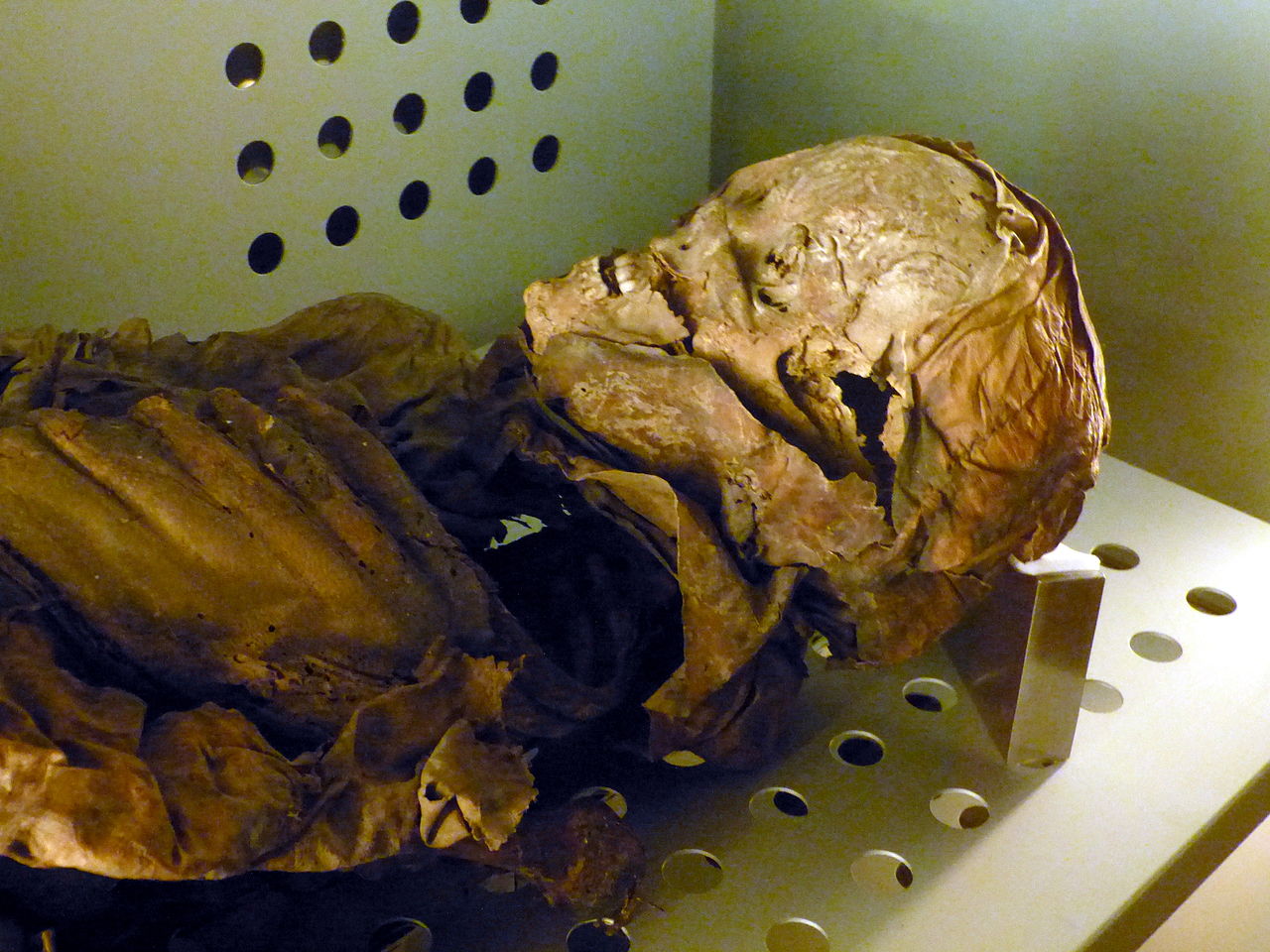
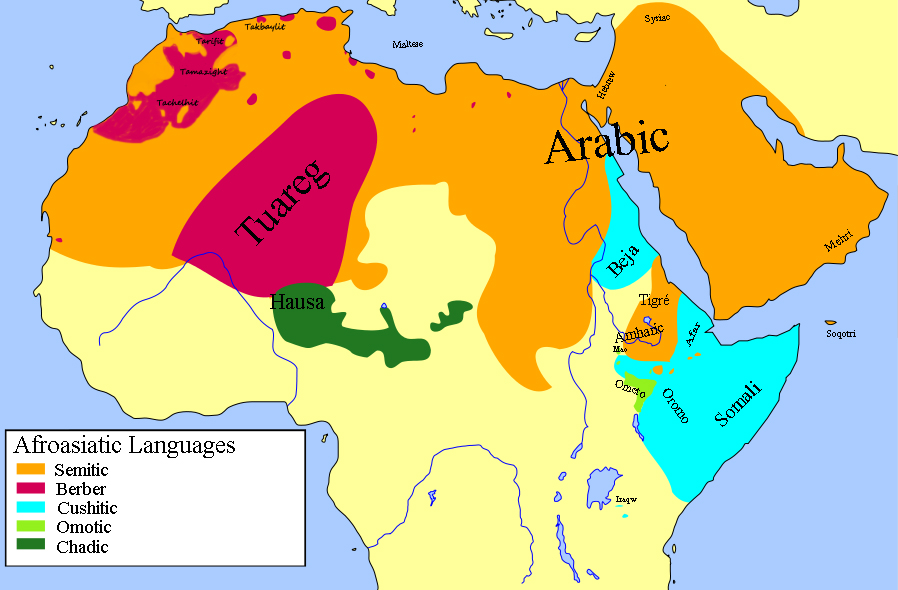

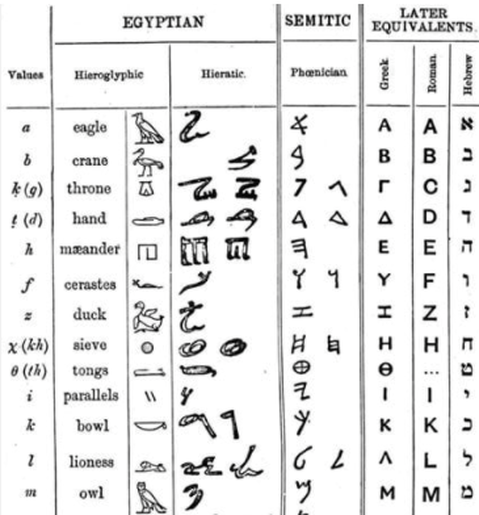
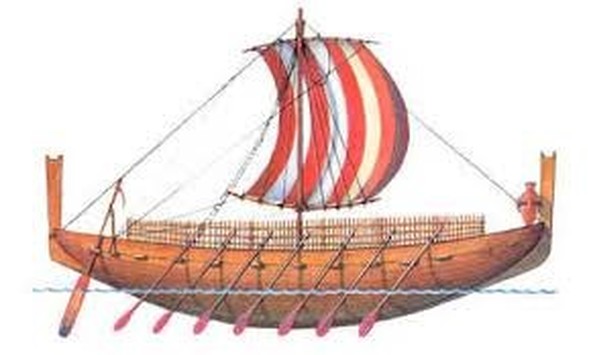
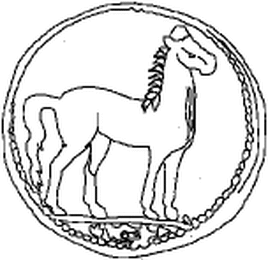
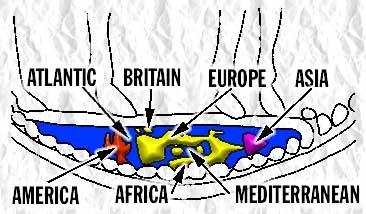

 RSS Feed
RSS Feed
